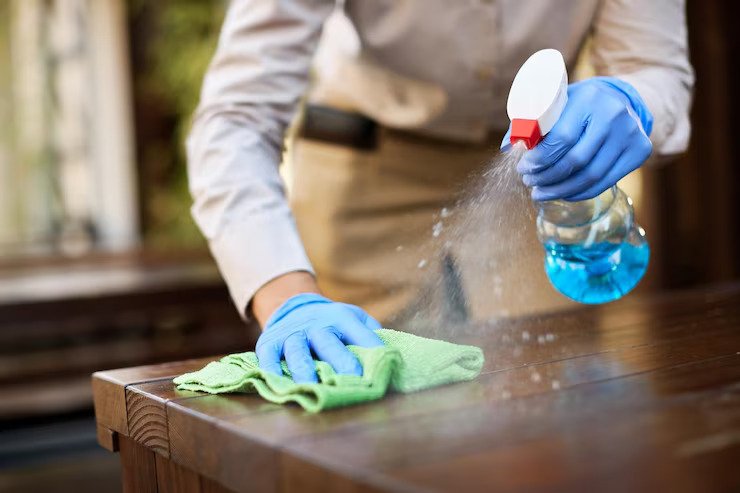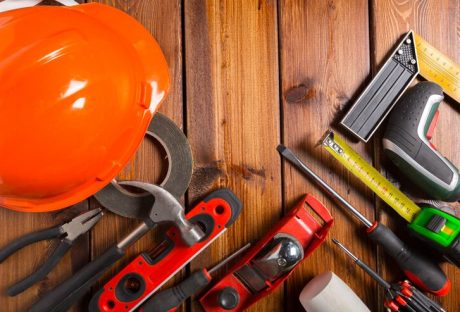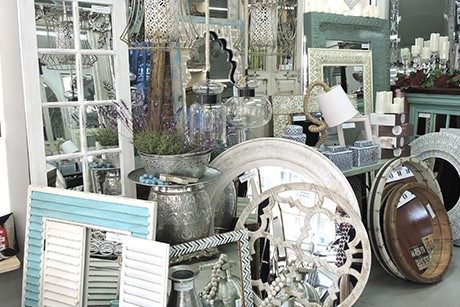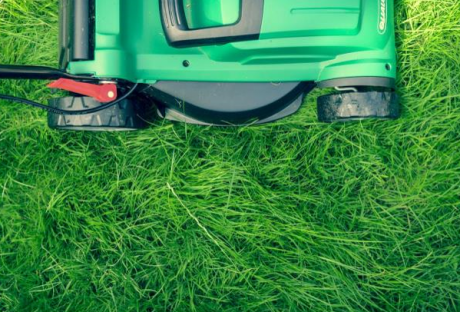Maintaining a clean and organized workplace is a must for your well-being and productivity. However, it is no secret that office cleaning is a daunting task.
There are so many things you need to consider, not to mention different areas and surfaces require different cleaning methods. Often, different methods require different cleaning equipment and cleaning supplies.
In this entry, we will share with you the best practices and processes that the best commercial cleaning services use in their office cleaning service. Here’s a commercial cleaning checklist to keep your workplace spotlessly clean.
The basics of office cleaning services
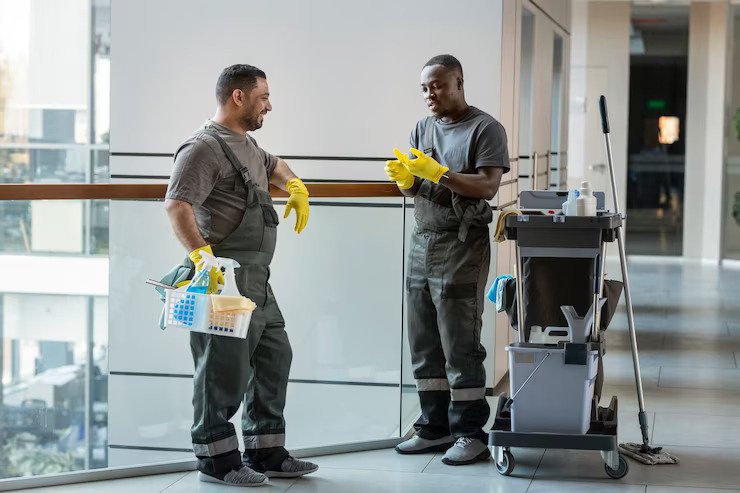
Before diving into the checklist, it is important that you understand the basic processes of commercial cleaning and how commercial cleaning companies deliver these practices.
Most of these things are pretty self-explanatory. However, there is a reason why professional cleaners from commercial cleaning companies are efficient in their job – they know how to do things right. Knowing these practices will help you understand how to do them right too.
Dusting
Dirt, dust, and allergen particles accumulate quickly. If not removed from the business premises, these particles can get mixed into the indoor air and cause various health problems such as allergies, respiratory problems, headaches, etc.
Commercial cleaning plans for office cleaning often include exhaustive dusting of all surfaces. This includes desks, shelves, electronics, windowsills, etc. A good commercial cleaning company uses microfiber cloth and a feather duster to remove dust effectively and safely.
Vacuuming
Vacuuming is the most efficient way to keep workplaces clean. It removes dirt, dust, and various outdoor debris from carpets, mats, rugs, etc.
The advantage of hiring cleaning services is that a commercial cleaning company has access to industrial-grade and powerful vacuum cleaning machines that can truly and efficiently remove dirt, dust, and various debris.
Nevertheless, when vacuuming your workplace, include cleaning the hard-to-reach areas, such as under the desks, tables, and chairs. Since they are hard to reach, these spots often trap foreign debris.
Mopping
Mopping is the best way to keep hard floors clean and shiny. It removes dirt, dust, and grime buildup from the floor. However, there is more to mopping than simply sliding the mop head back and forth on the surface of the floor.
When mopping the floor, use a cleaning solution that is recommended for the type of floor you have.
To ensure that all areas are covered, you need to mop in a back-and-forth motion.
Trash removal and disposal
No building maintenance will ever be complete without taking the trash out.
When removing trash from your commercial premises, make sure to replace the bin liners as well. And when replacing the liner, make sure you clean the interior of the trash bin.
Commercial cleaning services often include weekly disinfection of the trash bin. This is incredibly important in preventing bacteria buildup and odour in your trash bin.
Disinfecting surfaces
Another crucial aspect of commercial cleaning is surface disinfection. Disinfecting surfaces helps prevent the spread of disease-causing germs and bacteria in the workplace.
When disinfecting your workplace, make sure you use a disinfectant spray or antibacterial wipes to clean surfaces. This includes desks, chairs, tables, countertops, light switches, office appliances buttons, and doorknobs. Commercial cleaning services often include disinfection and sanitation of surfaces in their cleaning service.
Also, commercial cleaners, in particular, pay close attention to high-touch areas and surfaces, which are often breeding grounds for bacteria. These surfaces include hand railings, elevator buttons, light switches, and more.
Bathroom cleaning
Bathrooms are often the dirties and smelliest areas for commercial spaces. With that said, it is not surprising that they have become breeding grounds for bacteria and germs.
When cleaning bathrooms, make sure you clean and disinfect high-touch spots and items such as faucets, sinks, toilets, and even mirrors.
Commercial cleaners often include towel replacement, hand soap refill, and bathroom supplies restocking to ensure your office bathrooms are clean and convenient to use.
Breakroom cleaning
The breakroom is where employees often gather to chit-chat, eat their food, drink their beverages, and rest. For this reason, breakrooms can become breeding grounds for bacteria and germs. Thus, when taking care of your breakrooms, make sure you include the appliances, countertops, sink, tables, and chairs.
Glass window cleaning
Often, business owners neglect their windows, thinking they cannot clean surfaces they can’t reach. This is particularly true for tall building establishments.
Professional commercial cleaners, however, have access to the right cleaning equipment and materials you need for a thorough and efficient window cleaning. They have tall ladders, power washers, longer hoses, and the right safety equipment and gears for a thorough clean.
Floor care
Floors, whatever type of flooring material it uses, must be swept daily to remove dirt and debris. Moreover, make sure you use the right floor cleaner that is recommended for the type of flooring material your business premises has.
Carpet and upholstery cleaning
Carpets and rugs are basically dirt traps. Aside from completing the look of a certain room, carpets function as dirt traps to minimize and even stop dirt and dust from entering the premises.
While regular vacuuming can help, most office vacuums are not strong enough to rid carpets of deep-seated stains and bacteria. This is why commercial cleaning services invest in high-quality equipment so they can tackle difficult cleaning jobs like deep carpet cleaning.
And like carpets and rugs, upholstered furniture is dirt, dust, and allergen traps too. Regular vacuuming of upholstery removes foreign debris. However, to ensure your carpets are actually clean, fresh, and disinfected, you can ask professional cleaners to take care of them.
Most commercial cleaning service companies would suggest deep cleaning for carpets and furniture upholstery once or twice a year.
Air vent cleaning
Another incredibly important process for comprehensive commercial cleaning services includes air vent cleaning.
Air vents accumulate allergens, dust, and foreign debris over time. When there is too much buildup of these particles in your air vent system, your indoor air quality will drop, leading to health issues such as respiratory problems such as asthma attacks.
The Ultimate Commercial Cleaning Checklist for Your Workplace
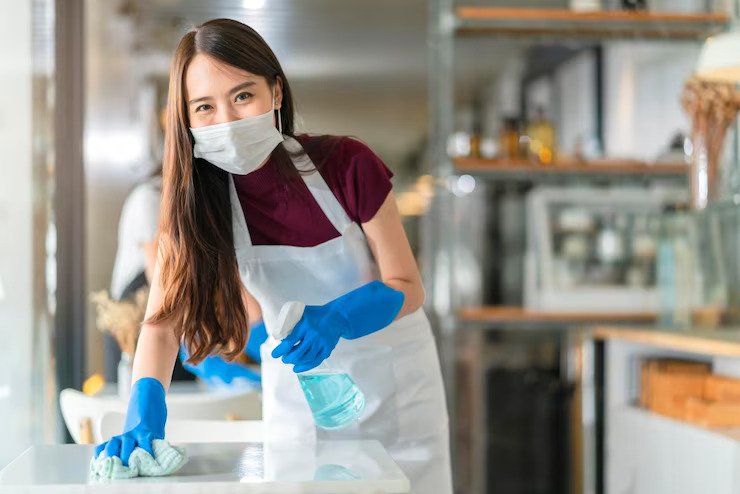
Daily Tasks:
Desk and Surfaces
Wipe down your desk and other surfaces daily with a disinfectant spray or wipe to remove any dirt, dust, or germs.
Trash
Empty your trash can daily, and ensure all rubbish is disposed of correctly.
Floors
Sweep or vacuum your floors daily to remove any dirt or debris.
Kitchen/Breakroom
Clean and sanitize all surfaces, including countertops, sinks, and appliances, daily.
Weekly Tasks:
Dusting
Dust all surfaces, including shelves, pictures, and light fixtures.
Glass and Mirrors
Clean all glass surfaces, including windows and mirrors, to remove any fingerprints or smudges.
Upholstery
Vacuum all upholstery, including chairs and couches, to remove any dirt or debris.
Disinfecting
Disinfect all high-touch areas, including doorknobs, light switches, and handles.
Floors
Mop or steam-clean your floors weekly to remove any stains or buildup.
Monthly Tasks:
Windows
Clean your windows inside and out to let in more natural light and improve the appearance of your workspace.
Carpets
Have your carpets cleaned by professionals to remove any deep-seated stains and odours.
Deep Cleaning
Perform a deep clean and complete disinfection of your entire workspace, including hard-to-reach areas and appliances.
Office Equipment
Clean and sanitize all office equipment, including computers, printers, and phones.
Restrooms
Thoroughly clean and sanitize your restroom, including the toilet, sink, and floors.
Seasonal Tasks:
Outdoor Maintenance
If you have an outdoor space, clean and maintain it seasonally to keep it looking its best.
HVAC Maintenance
Have your HVAC system inspected and cleaned seasonally to ensure proper airflow and reduce allergens.
Furniture Maintenance
Have any upholstered furniture professionally cleaned seasonally to extend its lifespan?
The Takeaway
As you can see, office cleaning is not a one-time thing. It is a continuous never-ending process. You can save yourself from all these troubles and opt for professional office cleaning instead.
Cleanworks cleaning services is one of the few professional commercial cleaning companies that actually deliver the highest quality professional service. They have been in the industry of professional commercial cleaning for more than two decades, thus they have the track record to say they have “been there, done that”.
Cleanworks cleaning services have a fully trained, extensively experienced, and completely equipped cleaning team to handle all sorts of cleaning. Their office cleaners are fully insured and up-to-date with the latest local cleaning requirements and COVID cleaning guidelines.
Call Cleanworks commercial cleaning services now and get free quotes for your commercial cleaning needs. Their professional staff will be more than willing to help you.
Read Also:













